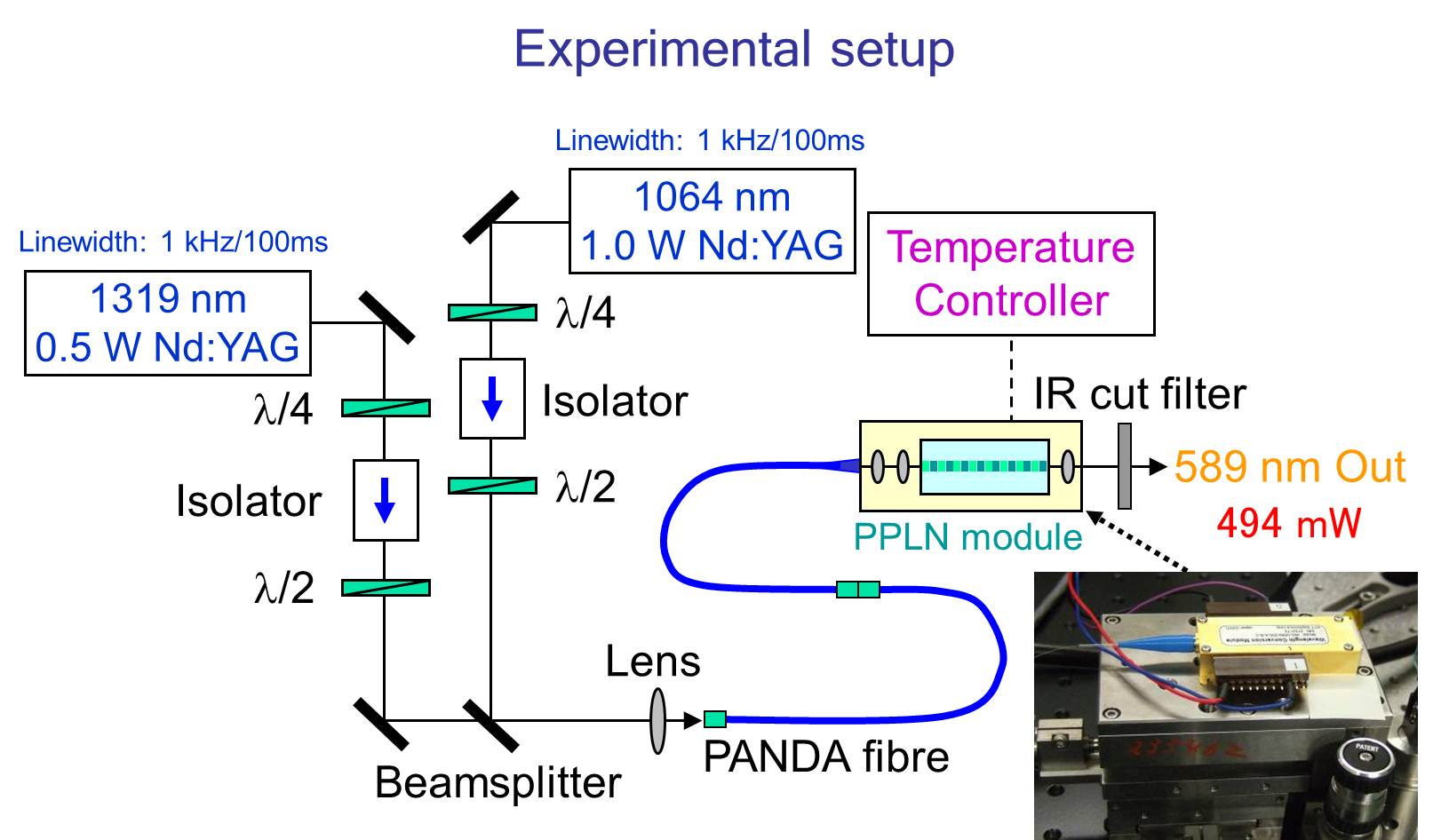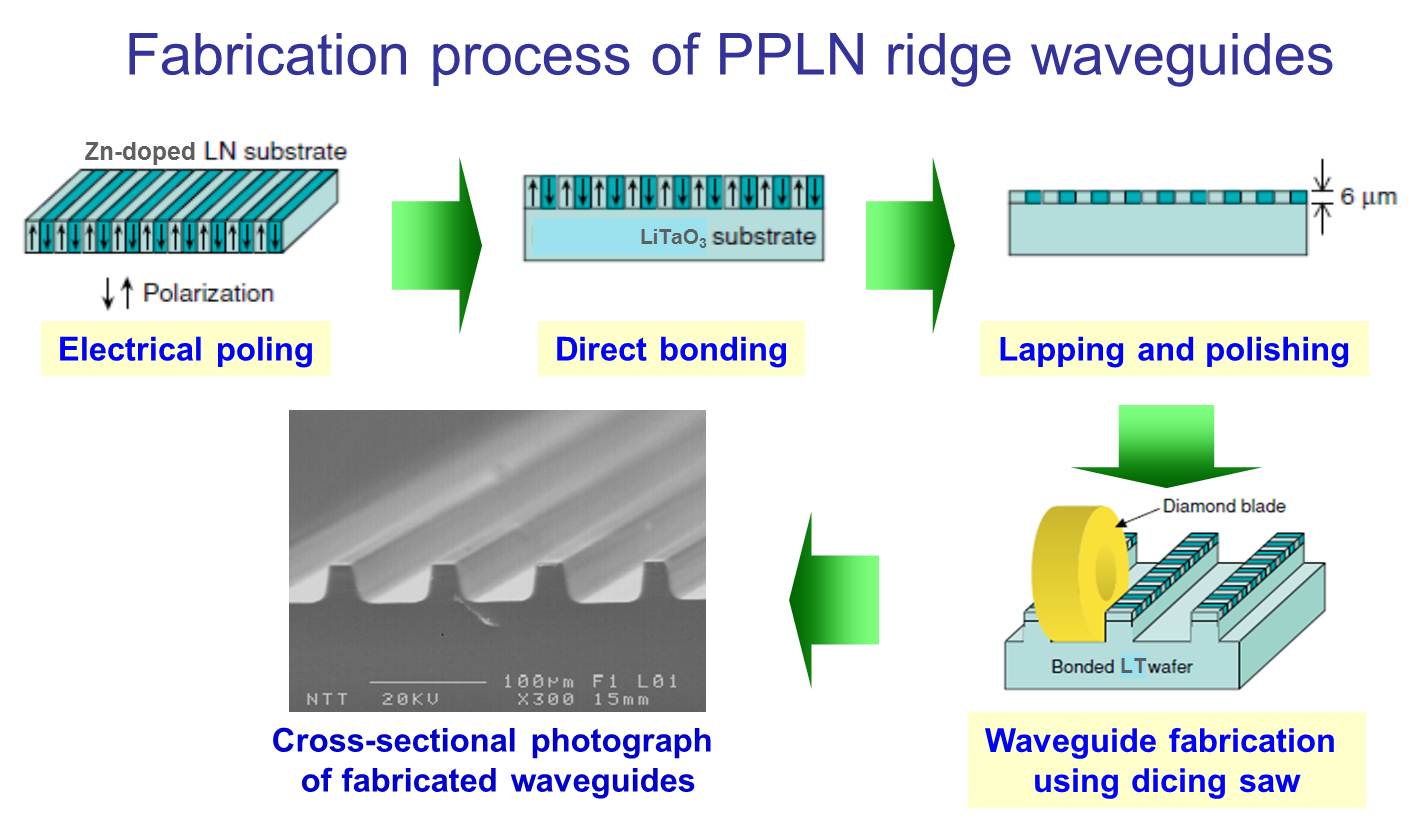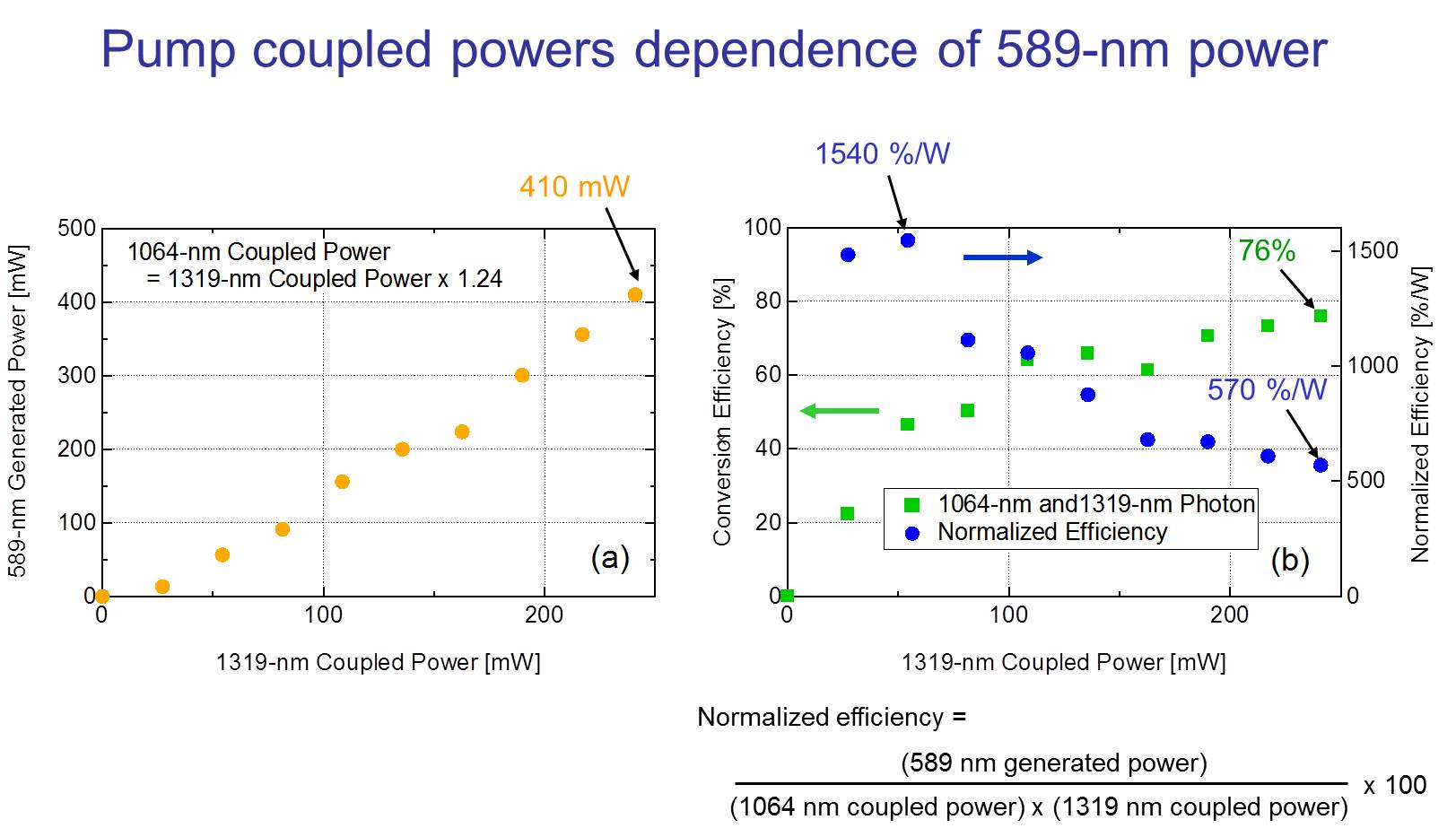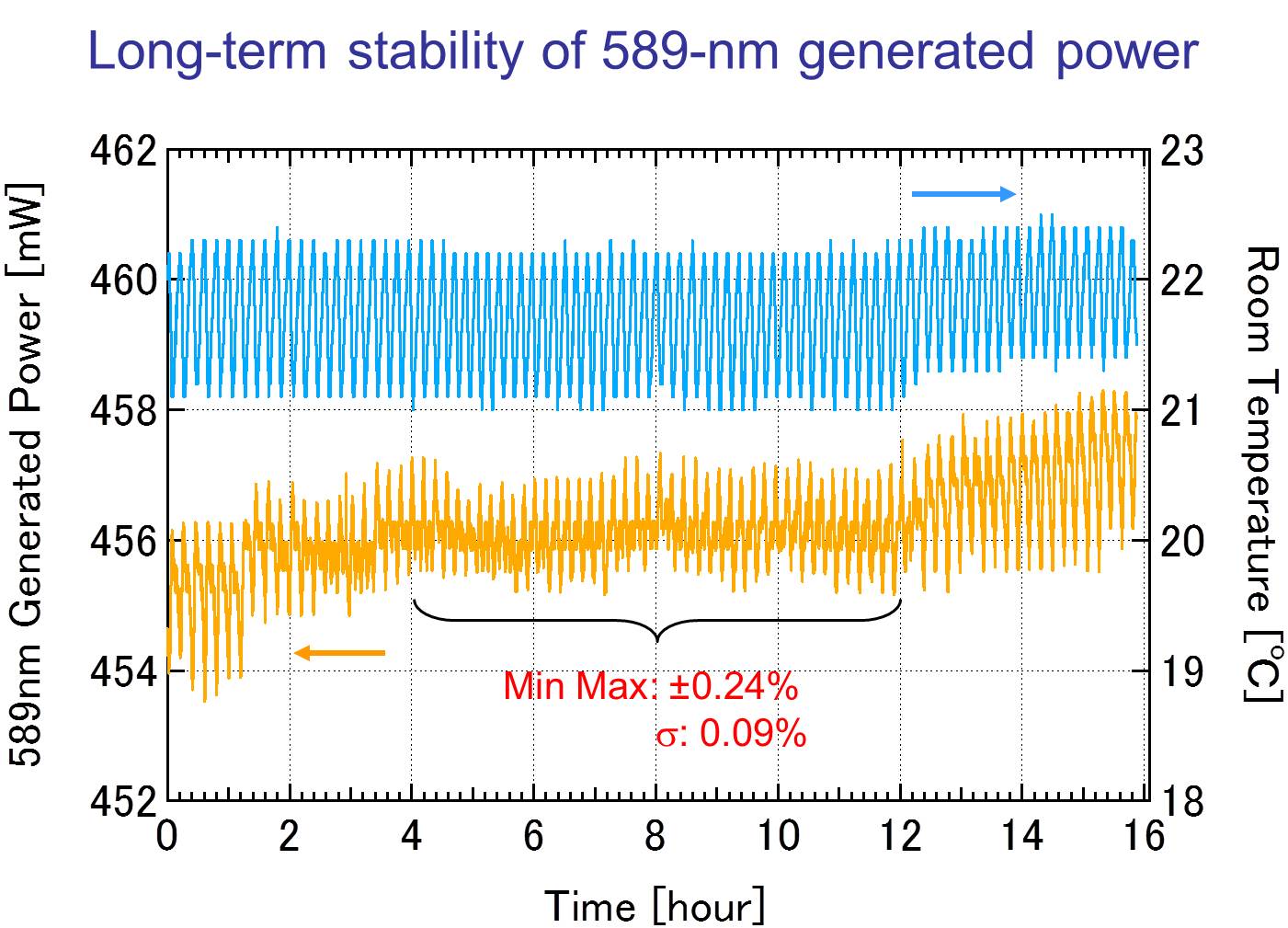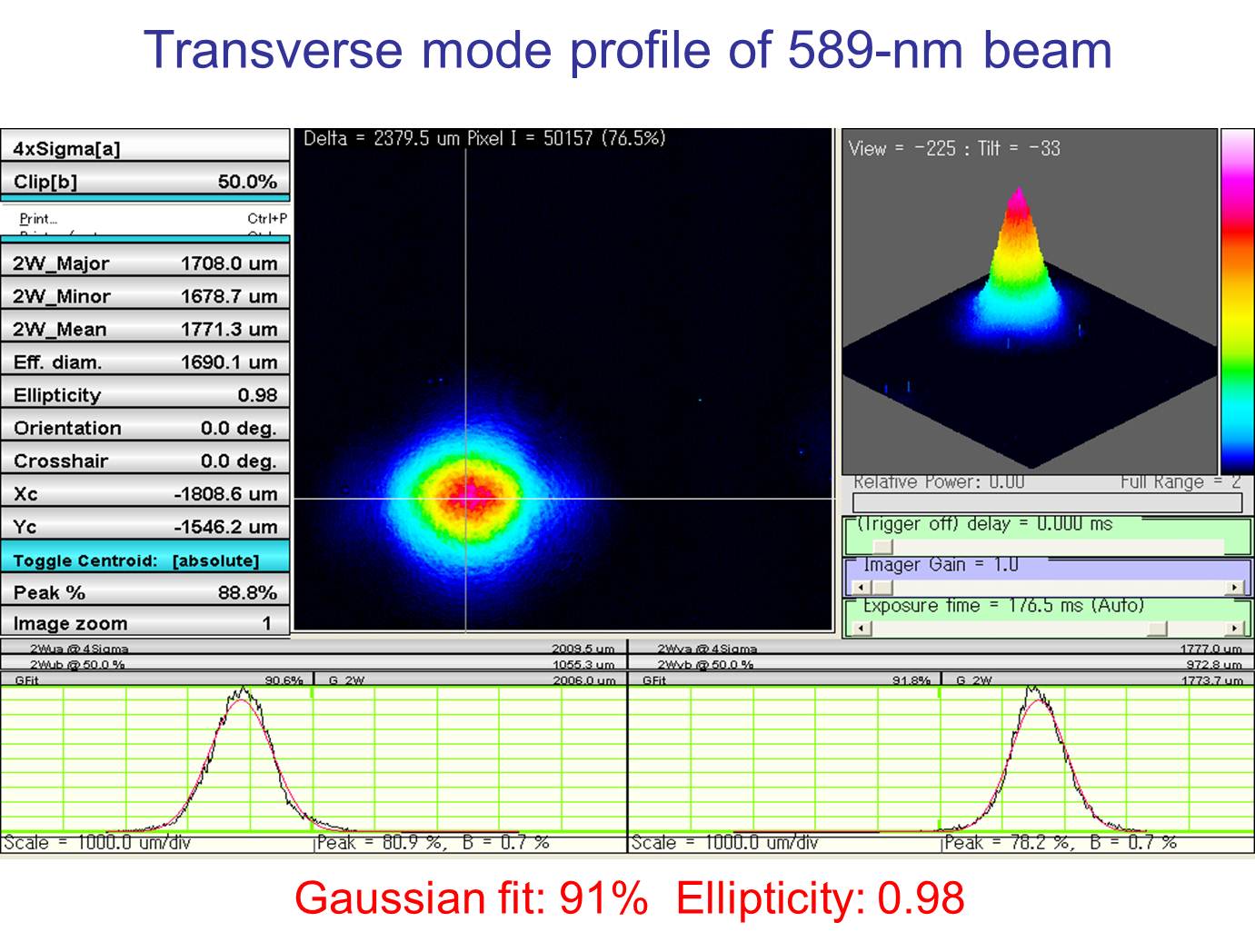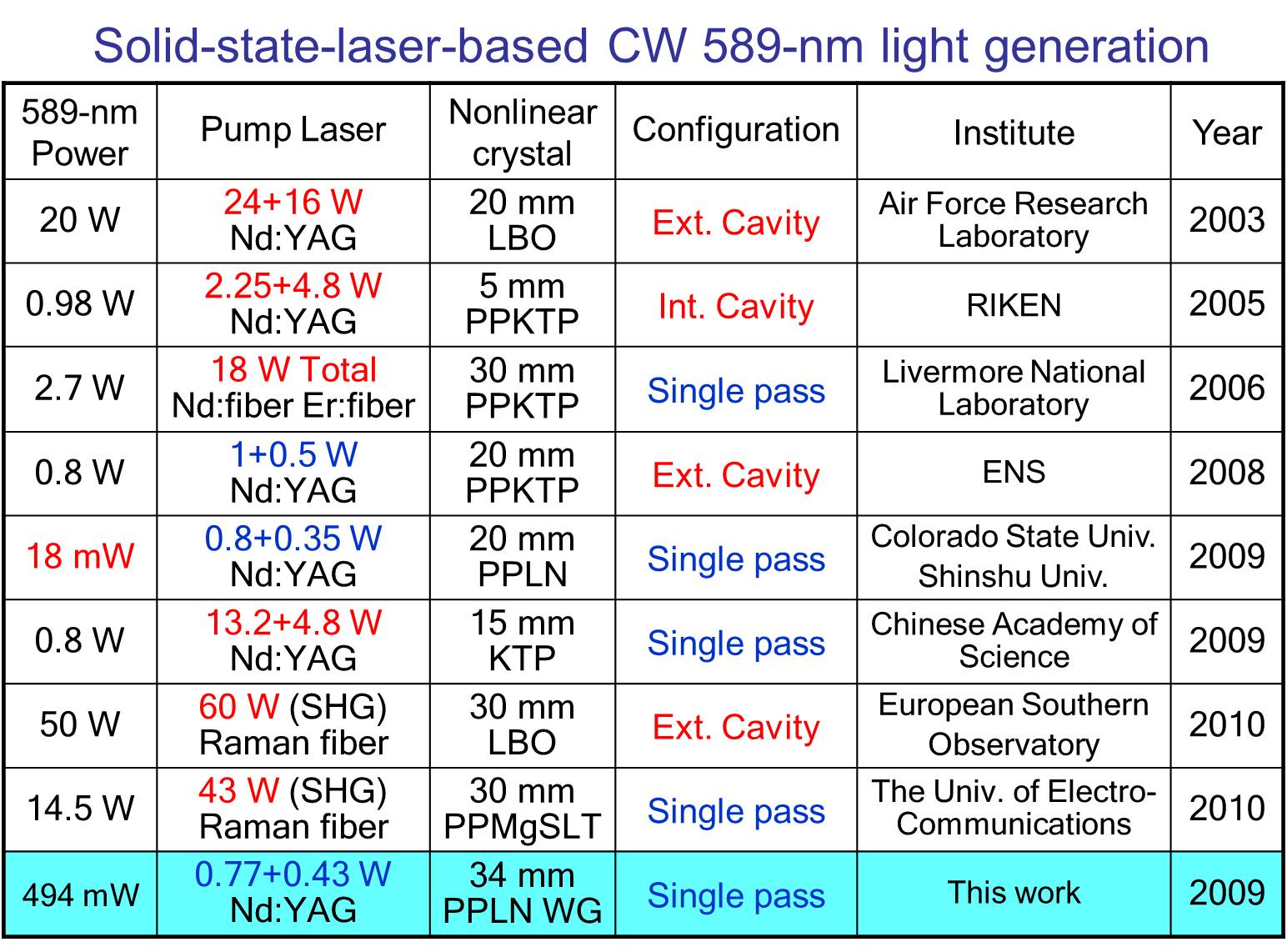
Sodium atoms have long played an important role in spectroscopy and in the study of degenerate quantum gases. Dye lasers have mainly been used since there are no appropriate solid-state lasers for generating continuous wave 589 nm light, which corresponds to the sodium doublet. These lasers have a problem as regards stability and their operation requires daily maintenance. A recently, proposed idea is to replace the dye laser with the sum-frequency generation of two solid-state lasers. However, more than several watts pump power or a complex doubly resonant enhancement cavity had to be used in order to obtain a good conversion efficiency. In order solve this problem, we used a periodically poled LiNbO3 ridge waveguide for the sum-frequency generation to obtain a high conversion efficiency to 589-nm light solely with a simple single-pass wavelength conversion process without an enhancement cavity. The maximum achieved 589 nm light power is 494 mW. The total conversion efficiency from the PPLN coupled power reached 78%. This means that 70% of the 1064 nm coupled photons and 90% of the 1319 nm coupled photons were converted to the 589 nm photons. This output power level is sufficient for making trapping beams, cooling beams, and repumping beams for cold sodium atom experiments. The currently obtainable maximum output power of the 589 nm light was limited by the 1319 nm Nd:YAG laser's power. We should be able to obtain higher output power by replacing the laser with a higher power model. This PPLN ridge waveguide module is also useful for generating other various wavelengths by SFG, SHG, and difference frequency generation which can not be obtained directly with a solid state laser.
